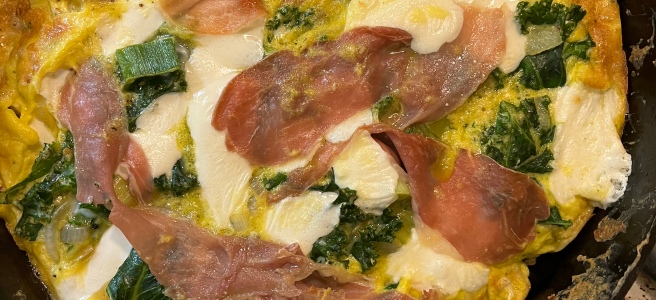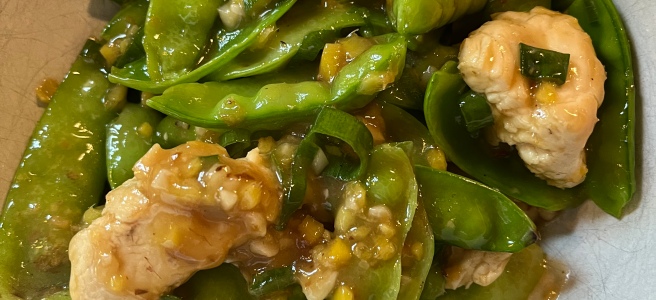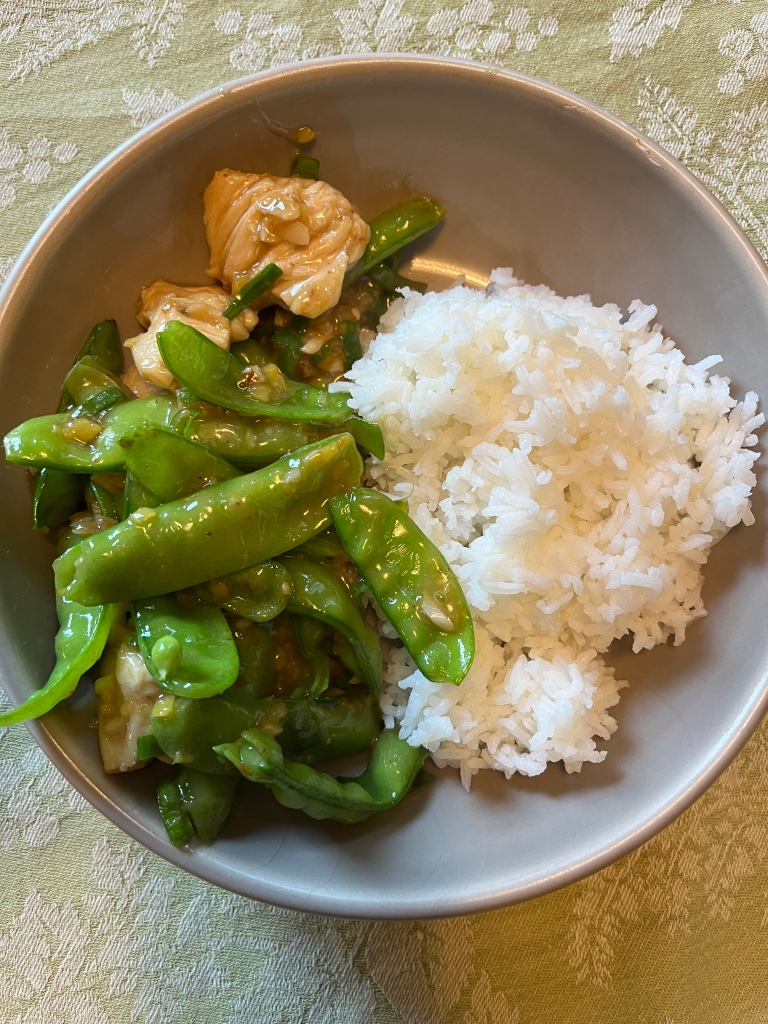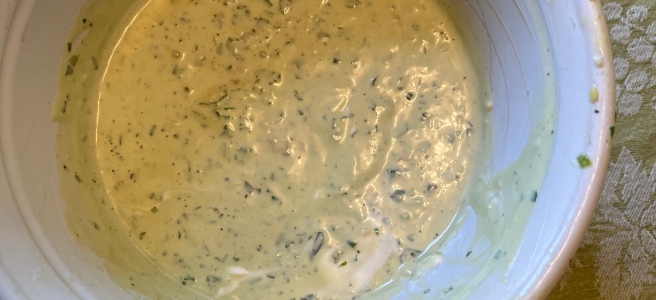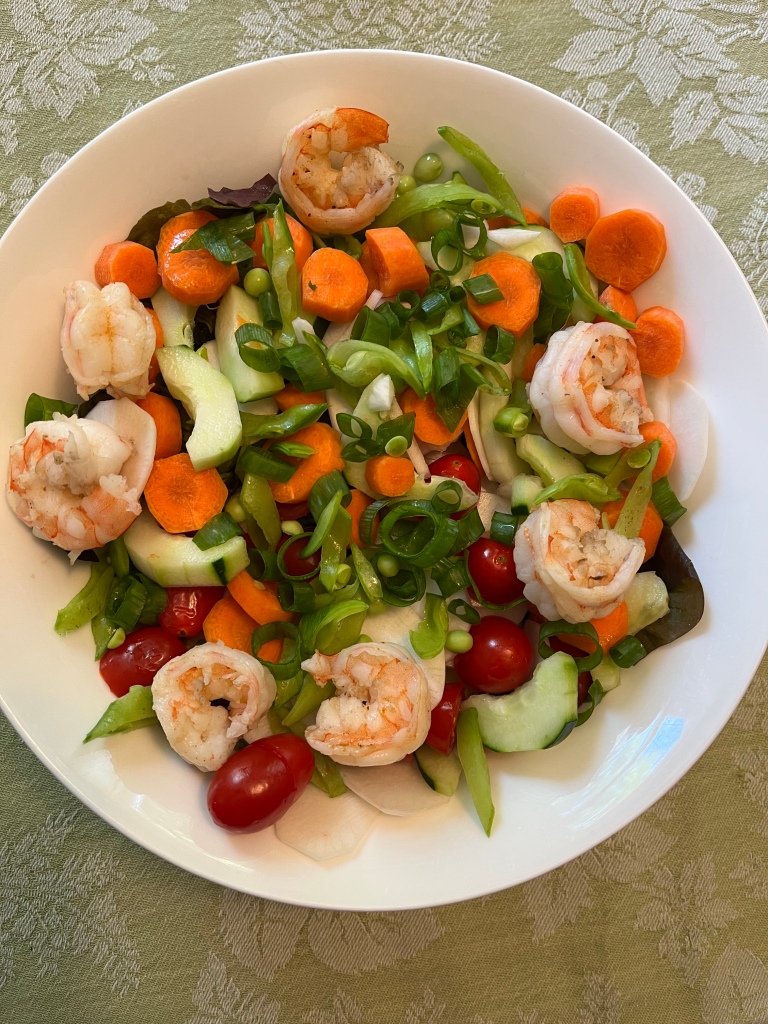There are so many recipes for frittata with varying ingredients beyond eggs, and various techniques including either flipping on a plate and putting back into a pan or broiling. I’m going with the broiling from now on. Easier. In a cast iron pan it seems to work fairly well. Just remember to remove the plastic handle cover before popping under the broiler!
Eggs, 8
Greens — boiled kale, or spinach or chard
Onion and scallion, sliced (optional)
Garlic cloves, 2, minced
Red pepper flakes, pinch
Parmesan, 2 T grated
Mozzarella, 1/4 #, sliced thin
Prosciutto, 3 or 4 slices, torn into strips
I also had some leftover parsley, garlic, oil purée from baking eggplant, which I threw in too. This is a template to use your fresh vegetables. It being July, I had fresh onions and a bounty of scallions on hand. So I sautéed the onion and then added in the scallion later, first the white part and last the green and then garlic at end. Put both the boiled kale and sautéed onion/scallion mixture into the refrigerator to chill while I prepped the other ingredients. Otherwise, adding the warm vegetables to the eggs could start to cook the eggs in the bowl before they get into the pan.
Directions:
- Prepare your greens. Boil the kale for 4-5 minutes. Or toss spinach or chard with garlic, olive oil, S&P in a bowl with your hands.
- Sauté onion with pinch of salt, and then scallion if using. Add some chopped garlic in for last minute. Put kale and onion mixture in refrigerator to un-warm.
- Prepare cheeses and prosciutto. Put eggs into bowl.
- Get out cast iron pan.
- Set up oven rack to high up close to broiler. Turn on broiler.
- Beat eggs and season with S&P. Add red pepper flakes and parmesan.
- Pour eggs over greens, onions and like veggies, and stir together.
- Heat a cast iron pan on medium-high heat and then pour in some olive oil to almost coat bottom. Add egg mixture and cook, topping with mozzarella and prosciutto. Lift up sides with spatula to let uncooked egg slip under and cook about 3 minutes, perhaps turning down heat if getting brown too quickly. Slip pan into broiler for 2-4 minutes until top is set.
Source: David Tanis, NY Times
